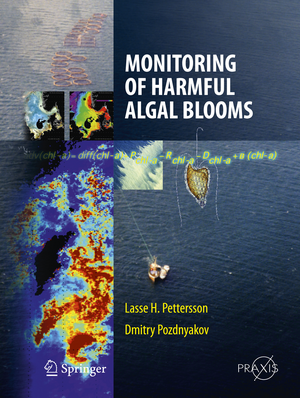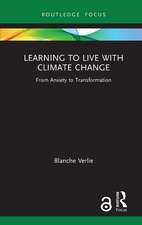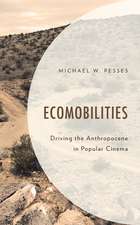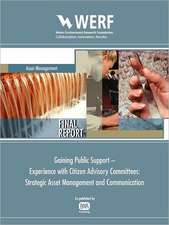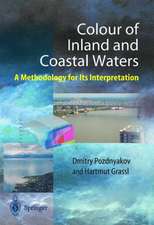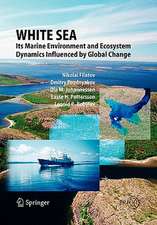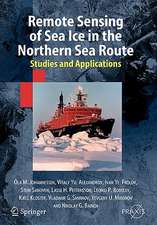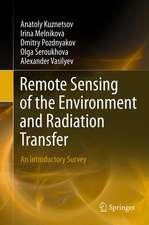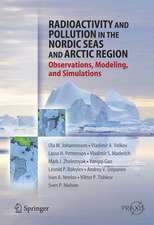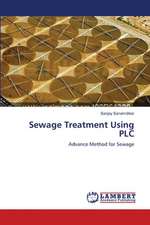Monitoring of Harmful Algal Blooms: Springer Praxis Books
Autor Lasse H. Pettersson, Dmitry Pozdnyakoven Limba Engleză Hardback – 24 iul 2012
| Toate formatele și edițiile | Preț | Express |
|---|---|---|
| Paperback (1) | 949.10 lei 6-8 săpt. | |
| Springer Berlin, Heidelberg – 23 aug 2016 | 949.10 lei 6-8 săpt. | |
| Hardback (1) | 961.55 lei 6-8 săpt. | |
| Springer Berlin, Heidelberg – 24 iul 2012 | 961.55 lei 6-8 săpt. |
Din seria Springer Praxis Books
-
 Preț: 294.46 lei
Preț: 294.46 lei -
 Preț: 223.45 lei
Preț: 223.45 lei -
 Preț: 193.12 lei
Preț: 193.12 lei -
 Preț: 167.85 lei
Preț: 167.85 lei -
 Preț: 288.98 lei
Preț: 288.98 lei -
 Preț: 323.74 lei
Preț: 323.74 lei -
 Preț: 401.38 lei
Preț: 401.38 lei -
 Preț: 264.12 lei
Preț: 264.12 lei - 8%
 Preț: 513.00 lei
Preț: 513.00 lei -
 Preț: 190.01 lei
Preț: 190.01 lei -
 Preț: 218.16 lei
Preț: 218.16 lei -
 Preț: 312.06 lei
Preț: 312.06 lei - 17%
 Preț: 414.05 lei
Preț: 414.05 lei -
 Preț: 216.41 lei
Preț: 216.41 lei -
 Preț: 262.27 lei
Preț: 262.27 lei -
 Preț: 264.35 lei
Preț: 264.35 lei -
 Preț: 167.63 lei
Preț: 167.63 lei -
 Preț: 284.81 lei
Preț: 284.81 lei -
 Preț: 259.08 lei
Preț: 259.08 lei -
 Preț: 305.47 lei
Preț: 305.47 lei -
 Preț: 244.14 lei
Preț: 244.14 lei -
 Preț: 227.85 lei
Preț: 227.85 lei -
 Preț: 285.25 lei
Preț: 285.25 lei -
 Preț: 295.56 lei
Preț: 295.56 lei -
 Preț: 357.17 lei
Preț: 357.17 lei -
 Preț: 275.79 lei
Preț: 275.79 lei -
 Preț: 257.08 lei
Preț: 257.08 lei -
 Preț: 349.71 lei
Preț: 349.71 lei -
 Preț: 272.45 lei
Preț: 272.45 lei -
 Preț: 270.27 lei
Preț: 270.27 lei - 8%
 Preț: 456.51 lei
Preț: 456.51 lei -
 Preț: 352.34 lei
Preț: 352.34 lei - 8%
 Preț: 394.80 lei
Preț: 394.80 lei -
 Preț: 320.65 lei
Preț: 320.65 lei -
 Preț: 325.29 lei
Preț: 325.29 lei -
 Preț: 253.11 lei
Preț: 253.11 lei -
 Preț: 192.86 lei
Preț: 192.86 lei -
 Preț: 313.40 lei
Preț: 313.40 lei -
 Preț: 150.51 lei
Preț: 150.51 lei -
 Preț: 233.34 lei
Preț: 233.34 lei -
 Preț: 286.78 lei
Preț: 286.78 lei -
 Preț: 212.01 lei
Preț: 212.01 lei -
 Preț: 366.83 lei
Preț: 366.83 lei -
 Preț: 299.99 lei
Preț: 299.99 lei -
 Preț: 232.27 lei
Preț: 232.27 lei -
 Preț: 284.58 lei
Preț: 284.58 lei -
 Preț: 212.45 lei
Preț: 212.45 lei -
 Preț: 159.81 lei
Preț: 159.81 lei -
 Preț: 349.48 lei
Preț: 349.48 lei - 20%
 Preț: 2061.64 lei
Preț: 2061.64 lei
Preț: 961.55 lei
Preț vechi: 1172.62 lei
-18% Nou
Puncte Express: 1442
Preț estimativ în valută:
184.02€ • 191.41$ • 151.92£
184.02€ • 191.41$ • 151.92£
Carte tipărită la comandă
Livrare economică 15-29 aprilie
Preluare comenzi: 021 569.72.76
Specificații
ISBN-13: 9783540228929
ISBN-10: 3540228926
Pagini: 300
Ilustrații: XXXI, 309 p.
Dimensiuni: 168 x 242 x 25 mm
Greutate: 0.91 kg
Ediția:2013
Editura: Springer Berlin, Heidelberg
Colecția Springer
Seriile Springer Praxis Books, Geophysical Sciences
Locul publicării:Berlin, Heidelberg, Germany
ISBN-10: 3540228926
Pagini: 300
Ilustrații: XXXI, 309 p.
Dimensiuni: 168 x 242 x 25 mm
Greutate: 0.91 kg
Ediția:2013
Editura: Springer Berlin, Heidelberg
Colecția Springer
Seriile Springer Praxis Books, Geophysical Sciences
Locul publicării:Berlin, Heidelberg, Germany
Public țintă
ResearchCuprins
Aspects of Harmful Algal Blooms (HAB).- Biology and ecology of some harmful algal species (focus on Chantonella-tbd).- Retrieval of algal bloom related quantities from space.- Monitoring algal bloom from space.- Integrated approach for operational and forecasting HAB events.
Caracteristici
Drawing on current and future satellite data presents visible perspectives of a more efficient HAB monitoring system for the future Emphasises practical applications, impacting on marine ecology, national economy, health, food and safety and quality assurance Using remote sensing and ecological/biochemical numerical modelling for data assimilation as techniques for predicting HAB Includes supplementary material: sn.pub/extras
